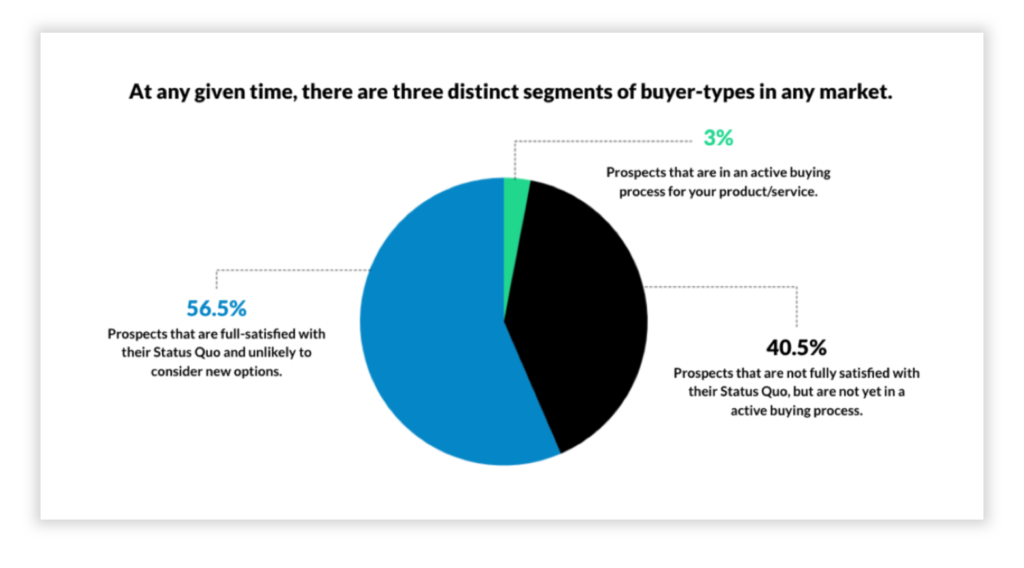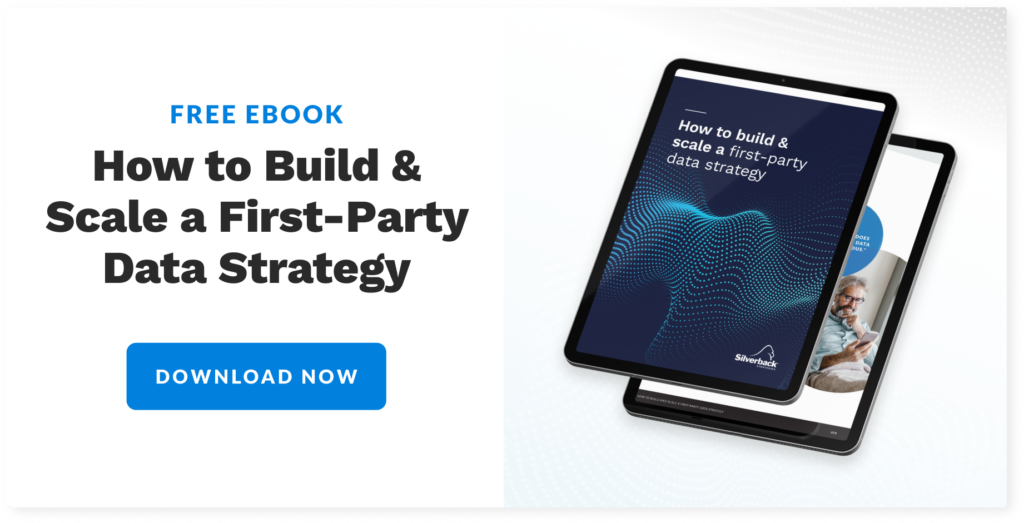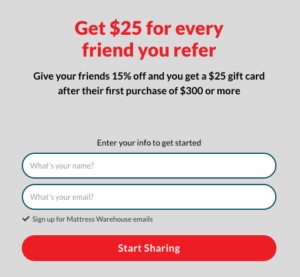
Part of performance marketing is driving website traffic, but websites are largely responsible for converting users into paying customers. A webpage’s layout, functionality, and copy all contribute to how well it performs. This article explores how to convert traffic into leads so you can get the most out of your traffic-generating investments.
What is a marketing lead?
It is common for the definition of a “lead” to vary across marketing teams. For the purposes of this article, “leads” are real human beings who have expressed some level of interest in your product or service by giving you their contact information.
However, not all leads are created equal. Some are more likely to buy than others.
In the 1950s, a social psychology professor at Harvard named Robert F. Bales created a method to measure the process of human interaction in small groups. This paved the way for modern market research. Findings from research using his methodology suggest three groups of buyers exist in any market at any point in time, based on their purchase intent:
- Satisfied with the status quo (56.5%)
- Dissatisfied with the status quo (40.5%)
- Actively on a buying journey (3%)

Marketers will first need to research their customers to understand how customers behave at each of these three stages. Then, use these insights to inform messaging, content and creative strategy for every stage of the marketing funnel. If you don’t already have an understanding of why your buyers buy from you, sometimes the best thing to do is the simplest: talk to your buyers. Recently, Katelyn Bourgoin was a guest on the Digital Marketing Troop podcast where she share the power of customer research:
How to convert traffic into leads
Once you have an understanding of why your buyers buy, you can solve for how buyers interact with your business online. Lead generation on digital channels usually requires an exchange of value. This valuable first-party data will become increasingly important to digital marketing strategies as advertising platforms comply with new data privacy laws. Download our free eBook to learn how to build and scale a first-party data strategy.

Website users are willing to give up personal information in exchange for something that delights them; discounts, how-to guides, exclusive events, etc. Here’s how to convert traffic into leads online in 5 steps:
- Create a compelling offer
- Launch a landing page
- Drive traffic to your landing page
- Test and measure results
- Iterate based on the insights
Let’s break down each step below:
1. Create a compelling offer
If you want a user’s personal information like name and email, you need to offer something they care about. In B2C this could be an exclusive discount. In B2B this could be a comprehensive original research study.
Here’s an example of a compelling offer in a business-to-consumer (B2C) company. Mattress Warehouse offers $25 for every friend you refer, and you can also get a 10% discount for subscribing to their email list. On a major purchase like a mattress, 10% can be a good amount of savings.

2. Launch a landing page
Here are the elements of an effective landing page:
- A main headline and a supporting headline. Heading structures help search engines like Google crawl and index your page, which helps to generate more organic search traffic.
- Images or video showing context of use. Some users are visual learners and need to see a product or service.
- The benefits of your offering. A common trap marketers make is focusing on the features of their product rather than the benefit to the end user.
- A form that works. There’s nothing more frustrating to a marketer than learning a form is broken. Ensure your landing page is working properly before driving traffic.
- A call to action. What do you want users to do once they land on your page? Make sure it’s clear what action users should take.
- Social proof. This can be customer testimonials, ratings, and reviews. Seeing or hearing other buyers share their experience with your brand is a powerful motivator.
Long Home Products’ roofing services page is a good example of a B2C landing page. It has a compelling offer (no payments, no interest for 12 months), a form that follows you down the page, it shows the range of roofing products, and closes with their value proposition.
ChurnZero’s platform page is a good example for B2B. It’s designed in a way that has depth. Each of the market segments in the pie chart above would find value. Those interested can learn more with a video overview, case studies, features, integrations, and schedule a demo.
3. Drive traffic to the landing page
Your landing page needs traffic to convert into leads. The volume of traffic you need depends on your industry, digital marketing objectives, and your strategy. First, you must understand the channels your buyers are most likely to use. It could be Google, Facebook, LinkedIn, TikTok, Twitter, or a number of others. Then you need to operate each platform to get traffic that drives quality leads.
On most digital channels, you can take an organic or paid approach to driving traffic. Each needs a different kind of investment. Organic requires time, while paid requires money. Money is replenishable. Time is not. An organic SEO management strategy can help drive down acquisition costs over a long period of time, but a paid media strategy gives businesses the ability to scale leads quickly.
4. Test and measure results
You can drive thousands of users to your landing page. You may even convert some into leads and sales. But if you don’t test and measure results, you won’t be able to improve or evolve with the market. Here are a few metrics to monitor for continuous improvement:
- Click-through-rate (CTR) on calls-to-action. This measures the proportion of users who clicked on a call to action. It can be helpful when testing new messaging or graphics.
- Conversion rate of each landing page. This measures the proportion of users who converted into a lead. This can be compared to other landing pages to learn what performs best.
- Number of new leads and sales from particular offers. This helps determine which offers are driving volume and/or quality leads.
5. Use insights to iterate the offer, landing page, and traffic drivers
Measuring data and looking at reports won’t do you any good if you don’t act on the insights. That’s why it’s critical to have a marketing team structure that enables feedback to influence tweaks and direction of your marketing campaigns.
For example, you may launch a series of landing pages. But one of them doesn’t load properly on mobile, causing an abnormal percent of users to bounce. This can be flagged in Google Analytics, triggering an audit and adjustments to load properly, increasing traffic and potential conversions. But this is only possible with the right system and team in place.
Why website traffic fails to convert
Now that we know the process of how to convert traffic into leads, let’s take a look at some common mistakes that cause users to leave your site.
- Lack of compelling offer or CTA. If your offer or call-to-action doesn’t resonate with the traffic you’re driving, users are unlikely to convert into a lead.
- Poor user experience. There are many factors that go into user expertise. For instance, when a user clicks on a link, but the site takes too long to load, users may become frustrated and click “back” to the page they came from. Or, if a web page has hard to read fonts, poor writing style, or obtrusive graphics, this can also dissuade users from taking the next step.
- Too much friction on the page. There could be a number of culprits, including too many form fields, calls-to-action below the fold, phone numbers that are hard to find, or even a button that blends in with the background or doesn’t look clickable. These may seem like small things, but they can absolutely impact conversion rates and performance.
- Too much or too little information. Depending on where your ideal prospect is in their buying journey, you want to give them the information they need to make a decision. Not too much, not too little.
- Too many links off the page. When you give users too many links on a page, they may not know what direction to take, or they navigate too far away and you risk losing potential leads. Another common mistake is when the links on a landing page don’t align with the next steps you want your user to take.
- No social proof. Seeing testimonials and accounts from other people who have purchased your product or service can build trust in your buyers, and can increase the chances of traffic converting into leads.
How to convert blog traffic into leads
You don’t always have to have a dedicated landing page to convert traffic into leads. For many businesses, blog pages drive a majority of organic traffic. Marketing teams have an opportunity to use content marketing to capture email addresses and other personal information in a variety of ways.
- Newsletter Signups. If buyers trust you enough to deliver good content (and not spam), many will opt-in to receive your email newsletter.
- PDF Downloads. Users still download PDFs, especially if it’s something like an annual research report. This kind of content can be delivered in exchange for an email address using a form.
- Limited Time Offers. Put an expiration date on a special discount or offer to prompt blog visitors to take immediate action. This could be to request a demo, or a coupon code for a discount on their first purchase.
- Webinars. Users must provide their email address to register for and attend a webinar. Users who land on a blog page may be willing to register for (or watch a recording of) a webinar on a similar topic.
- Quizzes. This tactic can be used to funnel blog traffic to a series of questions used to qualify traffic and collect first-party data, like name and email.
- Popups. While many popups make for poor user experience, they are one way to convert blog traffic into leads.
Work with a new kind of agency
Marketing has always been about generating revenue. But the best way to do it is constantly changing. That’s why it’s so important to constantly test the conversion rates on your landing pages and adjust quickly. Our analytics solutions help you optimize your conversion rates, driving high-quality leads to your sales team. Contact us to get started today.
AdAge, Inc. Magazine and Washington Post have recognized Silverback Strategies as a top place to work. Our secret is simple. Healthy teams lead to happy clients and happy employees. Silverback’s focus on team health leads to honest, open and direct communication between staff and clients alike. This means we solve issues faster, set clear expectations, and deliver exceptional results.
Recent Posts
How Modern Measurement Unlocks Marketing Growth
Read the ArticleWhat is Digital Marketing Analytics?
Read the ArticleGoogle Analytics 4 vs Universal Analytics
Read the Article
Unlock Your Growth Potential
Silverback helps businesses catapult web traffic, leads, and sales. We combine analytical and creative expertise to drive inbound marketing campaigns and track it all to find insights on what worked, what didn’t, and what we should try out next.
Contact Us